Where Did Ruth Come From? (28 May, 2015, 10 Sivan, 5775)
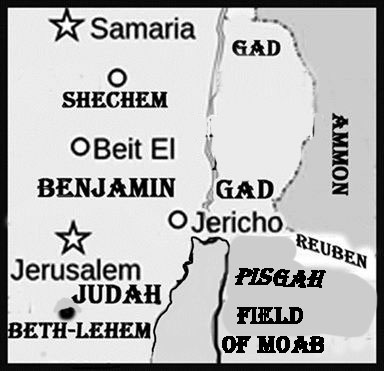
Contents:
1. Introduction. Ruth the Moabite Woman
2. The Ephraimite Talmudic-Type Mindset! A Diversionary Anecdote.
3. The Different Sections of the Land of Moab
4. The Israelite Area of Moab. Concordance Stastistics
5. Did "Sedeh-Moav" i.e. Field of Moab Mean "Moabite Moab"?
6. "Sedeh-Moav", i.e. "Field of Moab", as a Place of Exile?
7. Conclusion: The Literal Meaning when Properly Understood is Usually the True One
===============================
1. Introduction. Ruth the Moabite Woman
In the Book of Ruth the heroine, Ruth, is described as a Moabite woman (Ruth 1:22, 2:26) and as a foreigner (Ruth 2:10).
She came from a country called Moab. In the place called Moab that Ruth came from foreign gods were worshipped (1:15), and Moabite women were to be found (Ruth 1:4) who were considered foreigners to Israelites (2:10).
Nevertheless a strong school of thought has grown up around British-Israelite type aficionados tainted with racialist views who refuse to accept the fact that Ruth was a Moabitess.
They insist that Ruth was a dinky-die (in Australian slang), true-blue, genuine Israelite lady from birth.
Usually this would not overduly concern us since it only peripherally touches on our major fields of interest.
Nevertheless we got into the subject and feel we should round it off as well as we can.
===============================
2. The Ephraimite Talmudic-Type Mindset!
A Diversionary Anecdote:
Dell Griffin in the course of his colorful action-packed career as an Ephraimite pioneer at one stage began a course of study with the intention of possibly converting to Judaism.
He had a kind of mentor, named Rabbi Schneider (?), a resident of the city of Beth-Shemesh.
He quotes this rabbi as saying that Ephraimites may not be such great "catches" as converts since they are not suited to learning Talmud.
He may have misunderstood what the Rabbi said or intended.
Anyway the Rabbi in question apparently never had to cope with the tasks of Yair Davidiy.
We have found these Ephraimite types to be capable of coming up with the most convoluted arguments imaginable.
This is the kind of thinking that really is suited to Talmud study BUT there one has inbuilt guidelines that help keep the student on track.
Rabbi Avraham Feld recently made a similar observation.
He pointed out that Ephraimite types often fight and argue and require convincing. They make you work to teach and keep you on your toes.
But you get there.
Ordinary Gentiles are not usually like this but accept what is given them until somebody else says differently...
===============================
3. The Different Sections of the Land of Moab
Anyway the argument went that Ruth was of Israelite stock. She came from an area east of the Jordan that had once belonged to Moab but was occupied by Israelites and therefore she was called a Moabite woman, etc.
We dealt with this in our previous articles including the last one:
Plain Ruth. Exegesis in the Light of Reason
http://hebrewnations.com/articles/bible/ruth2.html
In this and the other articles we dealt, in our opinion, with all the claims made and also made challenges of our own that have not been adequately answered.
We were right on ALL points Except concerning the Land of Moab and distinctions with in it where we could have been more expansive in our explanation.
This is what we shall do now.
We shall explain what is meant by the term Moab and where one Moab may not be the same as the other.
Overview
The People of Moab originally possessed a wide expanse east of the Jordan. The Amorites conquered a portion of this and drove the Moabites out.
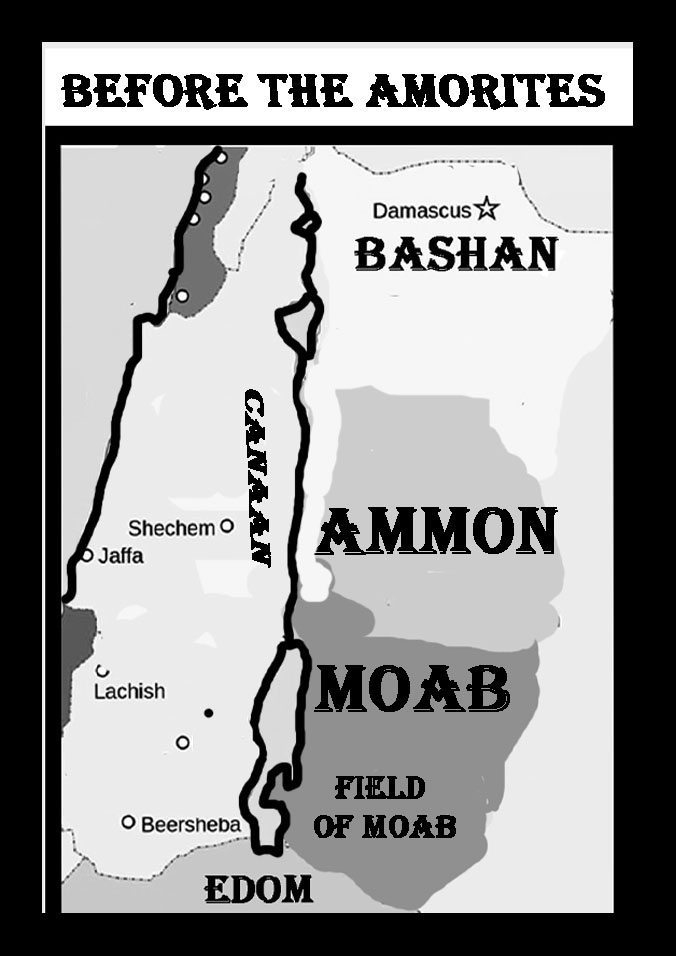
The Children of Israel when they came out of Israel were forbidden to take possession of any portion of Moab that Moabites were then dwelling in (Deuteronomy 2:10).
They were however allowed to take Land from the Amorites even when that land had originally belonged to Moab.
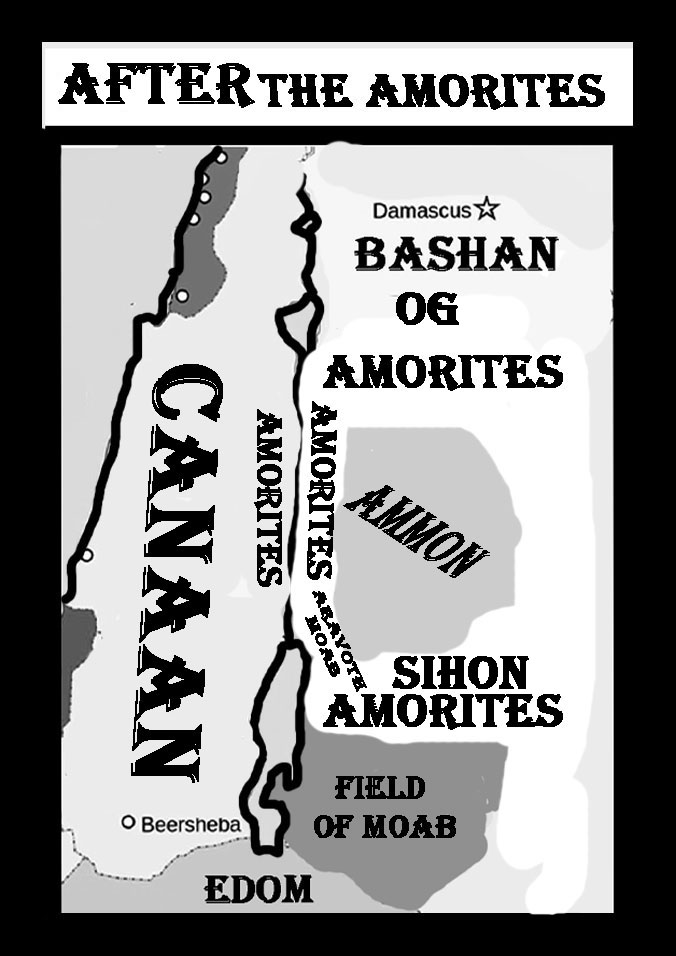
This is referred to in the Book of Judges (Judges 11:12-28).
Jephthah the Gileadite of the Tribe of Manasseh was called upon to deliver his people from the oppression of the Ammonites.
The King of Ammon had claimed that the Israelites were dwelling in land that had originally belonged to his people.
Jephthah the Gileadite explained that when the Israelites came out of Egypt, they passed through the wilderness and then wished to enter Canaan from the east. They requested permission from the king of Edom to pass through his land and were refused. They then asked the same of the King of Moab and again were denied. They also made a request of the King of Ammon and here too were told No!
After that they made the same suit of Sihon the Amorite king who in reply came out to battle against them. They defeated the Amorites and took possession of their land.
Any Moabite or Ammonite territory that they had came to them through Amorite intermediary.
The Israelites defeated the Amorites east of the Jordan and took possession of their land.
They encamped there until the death of Moses. The area at that time was referred to in Scripture as "Arvoth Moav" i.e. the Plains of Moab.
This area had been promised to the Children of Reuben on condition that they assist the other tribes in conquering the rest of the Land.
The Reubenites did not take full possession of it until after Moses died and Joshua succeeded them.
===============================
4. The Israelite Area of "Moab." Concordance Stastistics
The region formerly belonging to Moab which Sihon had conquered and that Israel took back from Sihon was still known as 'Aravoth Moab' (Joshua 13:32) and as 'Land of Moab' (Deuteronomy 32:49). 'Aravoth' literally means something like 'steppe or savannah grasslands'. Savannah is 'a transitional zone between forest and desert or grassland.' It is translated (in the NASB) as 'plains'. 'Aravoth Moab' was the region to the east of the Jordan River and later apportioned mainly to the Israelite Tribes of Reuben and Gad. In addition, the half-Tribe of Manasseh obtained areas in the north formerly belonging to Ammon but taken from them in the Amorite conquest.
Using a Hebrew-language Concordance along with the English Language Web Bible Hub feature we found 162 occurrences of the word Moab. Word combinations (Ir-Moab, Pahath-Moab, etc) containing the name Moab gives us another ca. 16 i.e. 178 times in Scripture. The area the Israelites encamped in before crossing the Jordan is referred to as "Aravoth Moab," i.e. the Plains or 'Grasslands' of Moab. The expression occurs 11 times. The term "Aravoth Moab" is NEVER used for anything else. The expression is ONLY used while the Israelites were encamped there.
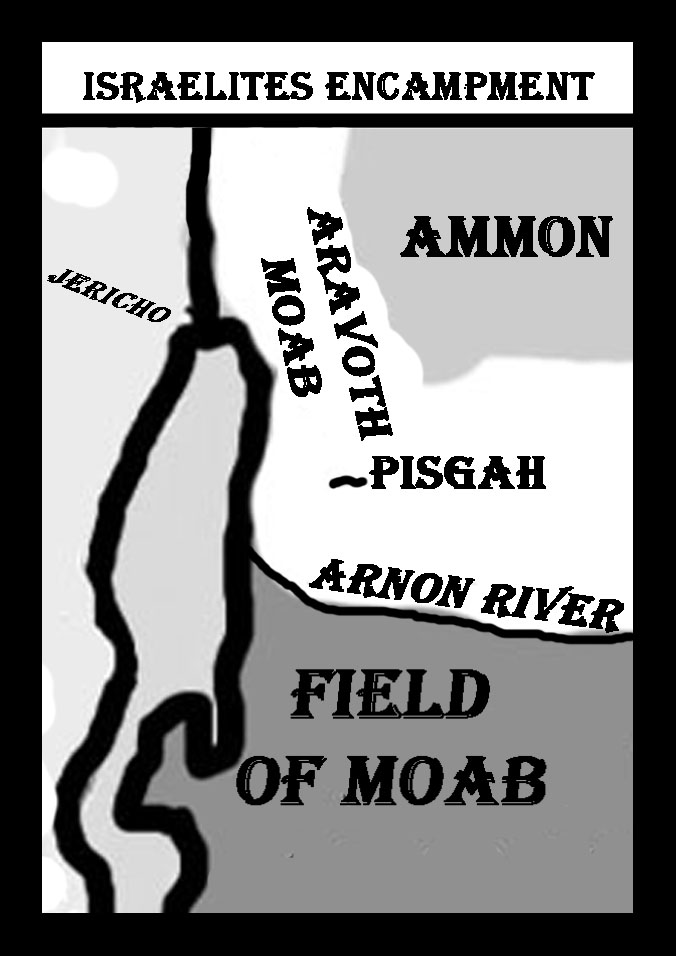
After the Conquest and Distribution of the Land under Joshua this region was firmly in possession of the Tribe of Reuben. From then on it is NEVER referred to as "Aravoth Moab" or any other name with the word Moab in it, as far as the Bible tells us.
We do however find the term 'Land of Moab' used once for an area in Israelite possession:
Deuteronomy 32 (NASB):
48 The Lord spoke to Moses that very same day, saying, 49 Go up to this mountain of the Abarim, Mount Nebo, which is in the land of Moab opposite Jericho, and look at the land of Canaan, which I am giving to the sons of Israel for a possession. 50 Then die on the mountain where you ascend, and begathered to your people, as Aaron your brother died on Mount Hor and was gathered to his people.
Here Moses was told to ascend Mount Nebo and die there. Mount Nebo was apparently in that part of Moab that the Israelites had conquered and not part of the area known as 'Aravoth Moab.'
These expressions 'Aravoth Moab' and 'Land of Moab' were ONLY USED for areas under Israelite control in the period before the conquest and Tribal distribution of the Lands west of the Jordan River. After that the allocation of the former areas of Moab and Ammon ('purified' by the Amorite conquest) to the Tribes of Reuben, and Gad was confirmed (Joshua 22:7, 9). The half-tribe of Manasseh (including clans of Gilead) also participated in the distribution and reception of these regions (Joshua 22:7, 9).
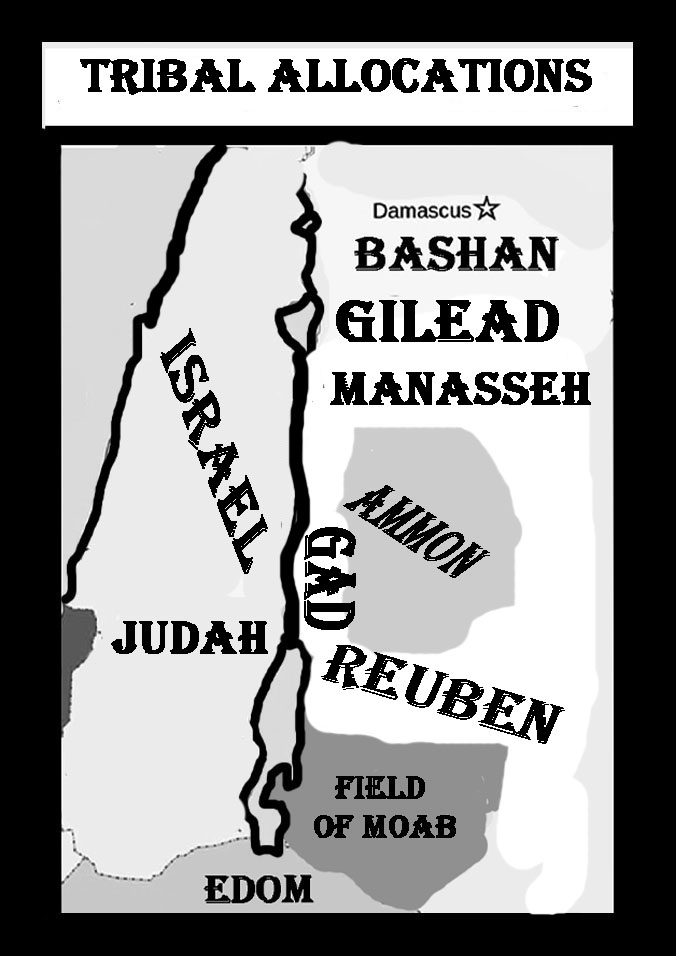
===============================
5. Did "Sedeh-Moav" i.e. Field of Moab Mean "Moabite Moab"?
Moab
https://en.wikipedia.org/wiki/Moab
The territory occupied by Moab at the period of its greatest extent, before the invasion of the Amorites, divided itself naturally into three distinct and independent portions: The enclosed corner or canton south of the Arnon (referred to as "field of Moab");[18] the more open rolling country north of the Arnon, opposite Jericho and up to the hills of Gilead (called the "land of Moab");[19] and the district below sea level in the tropical depths of the Jordan valley.[20]
There is an expression "Sedeh-Moav" i.e. Field of Moab. Ruth came from here.
Now "field" in English can have a similar connotation to the word plain i.e. flat expanse. This however does not mean that the two words also have the same meaning in Hebrew.
We find the expression €œField of€ being used to connote €œCountry of€ in general e.g. the Field of the Amalekites (Genesis 14:7) i.e. the Country of the Amalekites; the Field of Edom (Genesis 32:4) meaning the Land of Edom; the Field of the Philistines (1-Samuel 6:1 and elsewhere) meaning the Land of the Philistines, etc.
In the Book of Ruth the Land of Moab is always referred to as Sedeh-Moab i.e. the Field of Moab (Ruth 1:1, 2, 6).
Sedeh-Moav and Arvoth-Moav are not however the same.
The expression "field of" in Hebrew as in English can also connote the lands around or attached to.
We find the expression "Sedeh-Moav" 6 times in the Hebrew Bible. 3 in the Book of Ruth and 3 elsewhere.
(1) Genesis 36:35
(2) Numbers 21:20
(3) Ruth 1:1, 2, 6,
(4) 1-Chronicles 8:8
The first time it denotes the scene of a battle between a King of Edom and Midianites, exactly where this took place is not known today.
Genesis 36:35 And Husham died, and Hadad the son of Bedad, who smote Midian in the field of Moab, reigned in his stead: and the name of his city was Avith.
The 2nd time the expression occurs it describes one of the encampments of Israel in the wilderness (Numbers 21:20).
Numbers 21:
16 And from there they went to Beer: that is the well of which the LORD spoke unto Moses, Gather the people together, and I will give them water.
17 Then Israel sang this song, Spring up, O well; sing you unto it:
18 The princes dug the well, the nobles of the people dug it, by the direction of the lawgiver, with their staves. And from the wilderness they went to Mattanah:
19 And from Mattanah to Nahaliel: and from Nahaliel to Bamoth:
20 And from Bamoth in the valley that is in the Field of Moab, to the top of Pisgah, which looks toward the wasteland.

This could be used in argument by the "Ruth was an Israelite" people.
Since the Israelites were forbidden to conquer any Land of Moab but permitted to take Moabite Land that the Amorites had "purified" by prior possession then it would seem that the "Field of Moab" here must have been in that area which they later did conquer.
Not so.
This was a border area in the region between the Moabites who dwelt in Moab and that portion of Moab the Amorites had conquered.
It was evidently from here that the Israelites sent messengers unto the King of Moab asking permission to pass through the Land of Moab (Judges 11:17).
Judges 11:
17 then Israel sent messengers unto the king of Edom, saying, Let me, I pray thee, pass through thy land: but the king of Edom would not hearken thereto. And in like manner they sent unto the king of Moab: but he would not consent: and Israel abode in Kadesh.

This section of the Field of Moab was connected with "the top of Pisgah".
Numbers 21:
20 And from Bamoth in the valley that is in the Field of Moab, to the top of Pisgah, which looks toward the wasteland.
On the one hand, Moses went up to the top of Pisgah.
"Then Moses climbed Mount Nebo from the plains of Moab to the top of Pisgah, across from Jericho. There the LORD showed him the whole land, from Gilead to Dan, all of Naphtali, the territory of Ephraim and Manasseh, all the land of Judah as far as the Mediterranean Sea, the Negev and the whole region from the Valley of Jericho, the City of Palms, as far as Zoar. Then the LORD said to him, 'This is the land I promised on oath to Abraham, Isaac and Jacob when I said, 'I will give it to your descendants.' I have let you see it with your eyes, but you will not cross over into it.' (Deuteronomy 34:1-4).
Before then however, Balak the King of Moab had offered sacrifices on the "top of Pisgah".
"So he took him to the field of Zophim on the top of Pisgah, and there he built seven altars and offered a bull and a ram on each altar" (Numbers 23:14).
We do not know where exactly these places were but we can make an estimate. Balak was accompanied by Balaam the pagan pontiff. They had intended to curse the Israelites. They had gone up to a place from which the Israelite camp could be seen but which they did not control. It follows that the Pisgah was in the border region adjoining Moab but not quite within its borders. The area defined as €œField of Moab€ may therefore have merged with that liberated from Sihon but it was not pertaining to it. It seems that the €œtop of Pisgah€ overlooked the Land of Moab and Aravoth Moab and the €œField of Moab.€ The €œField of Moab€ was that which was to remain for the Moabites proper.
Numners 20:13 tells us that the Israelites had conquered the region north of the Arnon River. The Country, i.e. Field, of Moab was to the south of the Arnon River.
Numbers 20:20 describes the extent of the Israelites conquests and concludes with the "valley that is in the Field of Moab." No-one knows for sure were this was but it would appear that the valley through which flows the Arnon River is the most likely candidate.
===============================
6. "Sedeh-Moav", i.e. "Field of Moab", as a Place of Exile.
The 4th instance where the expression "Field of Moab" is found concerns exiles from the Tribe of Benjamin.
1-Chronicles 8:
6 Ehud's descendants, who were leaders of their ancestral households in Geba and who were taken into exile to Manahath, included: 7 Naaman, Ahijah, and Gera (also known as Heglam), who fathered Uzza and Ahihud.
8 Shaharaim fathered sons in the Field of Moab [sedeh-Moab], after he had divorced his wives Hushim and Baara.
It does not say who "Shaharaim" was. Yehudah Kiel (Daat Mikra on Divrei -HaYamim) quotes the GRA, i.e. Eliyahu of Vilna] that verse 8:8 continues on from the verse before it:
It should read:
7 Naaman, Ahijah, and Gera (also known as Heglam), who fathered Uzza and Ahihud. [and] 8 Shaharaim [who] fathered sons in the land of [Sadeh] Moab.
The individual named "Shaharaim" may well have been in Exile in the Moabite portion of Moab i.e. the Field of Moab.
===============================
7. Conclusion: The Literal Meaning when Properly Understood is Usually the True One
We do not know for sure what "Sedeh Moab" ("Field of Moab") actually meant.
It seems to connote Moabite Moab. It could perhaps, as a remote possibility, refer to either Moabite Moab or a portion of Reubenite Moab but this is unlikely in view of the way it is employed in Scripture.
The simple meaning of the Hebrew Bible says that Ruth was a Moabite woman. She came from the "field of Moab" and only from there according to the Bible.
If the term 'Field of Moab' ever meant anything other than the area south of the Arnon River (which is doubtful) then it only applied as long as Moabites lived there. The Field of Moab meant the Land of Moab. That is how it was always understood.
There is no reason to understand the text otherwise.
Unless one has an agenda.
See Also:







